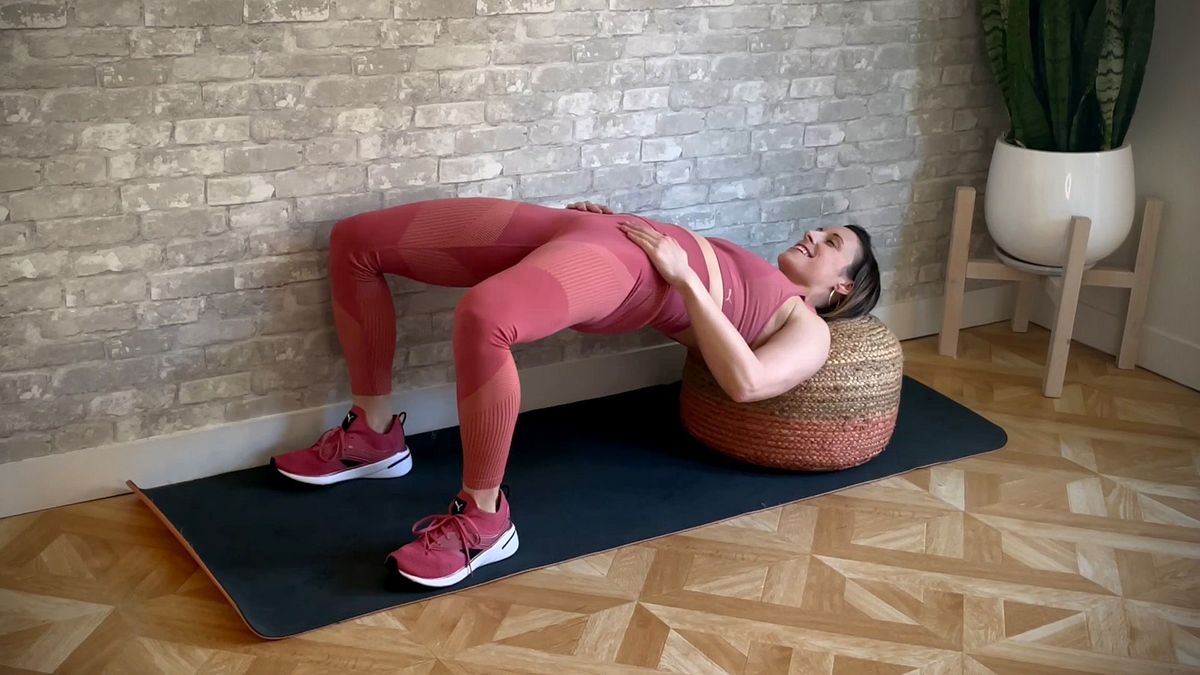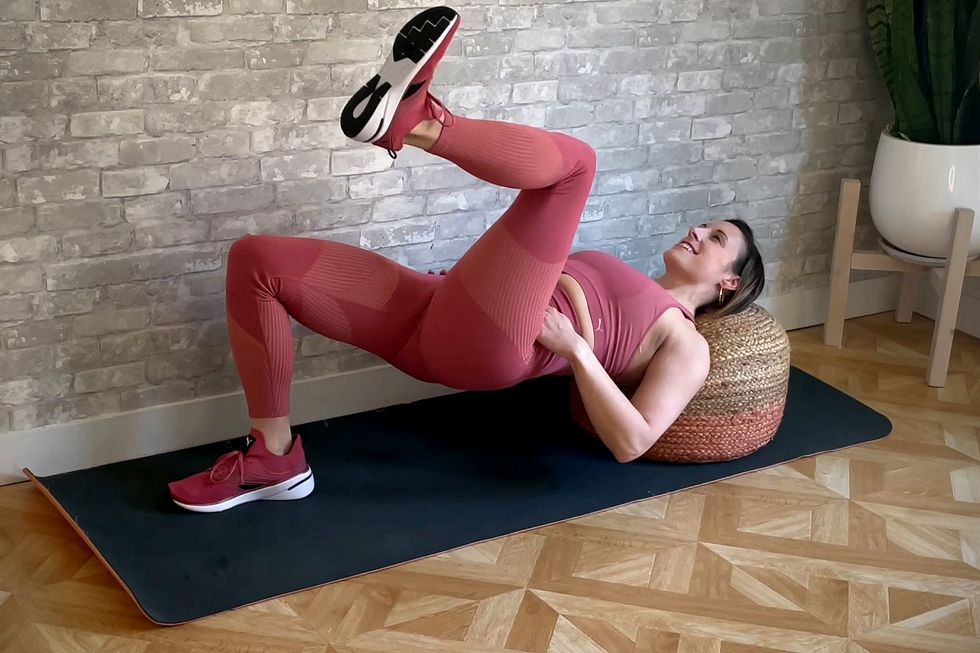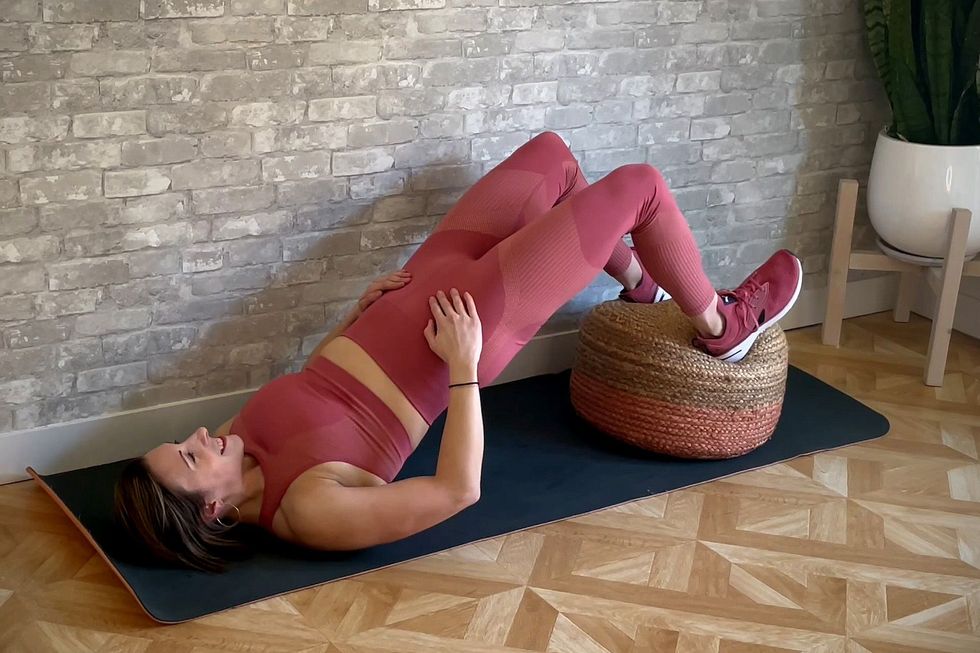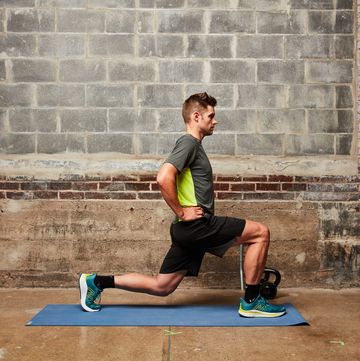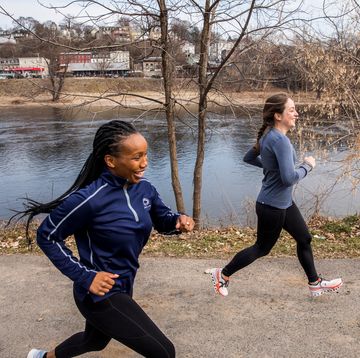A typical leg day routine may include a squats, lunges, and deadlifts to help strengthen your glutes and hamstrings. But if you really want a strong backside, you’ll want to incorporate the hip thrust too. Why? Because according to research, a strength training program complete with hip thrusts is more effective at increasing sprint time, compared to a program featuring squats.
That’s why we tapped Amber Rees, cofounder of The Brave Body Project and senior instructor at Barry’s in New York City to design this hip thrust workout, specifically for runners, so you can build a stronger lower half that will support your favorite hobby.
The Benefits of a Hip Thrust Workout for Runners
“Hip thrusters strengthen your glutes in a way no other exercise does. They help build strength and power in your posterior chain, which is also important for stabilization in your core,” says Rees. “Strong glutes help control stride length and help the runner to maintain good biomechanics, especially when you start to fatigue on those long runs,” she says.
Hip thrusts look similar to another move you might know, called the glute bridge. But it varies in that the shoulders are typically elevated on the hip thrust (placing the upper body on or against a bench, chair, couch, or cushion will work). This allows for greater range of motion in the hips. The key for both moves: Engaging the glutes, rather than lifting with your low back.
To help you add hip thrust exercises into your workout routine, Rees demonstrates a traditional hip thrust, plus three variations. Add one to your next lower body session, or put them all together for one serious glute and hamstring workout.
How to use this list: Do 12 reps of each exercise, with little to no rest in between each move. You can complete 2 to 3 sets of this workout, resting for 30 seconds in between each set.
1. Traditional Hip Thrust
Sit on the floor with knees bent and feet planted. Rest shoulders and upper back on a stability ball, couch, or other elevated service. Looking down toward belly button, drive feet into floor, engage glutes, and lift hips off the ground, forming a straight line from shoulders to knees. Slowly lower hips back toward the floor. Repeat. Do 12 reps.
2. Hip Thrust Hold With Walkout
Sit on the floor with knees bent and feet planted. Rest shoulders and upper back on a stability ball, couch, or other elevated service. Looking down toward belly button, drive feet into floor, engage glutes, and lift hips off the ground, forming a straight line from shoulders to knees. Hold this position, keeping glutes engaged. Then, walk feet out one step at a time until knees are almost straight. Then, walk feet back in. That’s one rep. Do 12 reps. Alternate which foot you start with each rep.
3. Hip Thrust Hold With Alternating March
Sit on the floor with knees bent and feet planted. Rest shoulders and upper back on a stability ball, couch, or other elevated service. Looking down toward belly button, drive feet into floor, engage glutes, and lift hips off the ground, forming a straight line from shoulders to knees. Hold this position, keeping glutes engaged. Lift right foot, driving knee toward chest, while driving left foot into floor. Lower right foot, and repeat on left side. Continue alternating for 12 reps per side.
4. Feet Elevated Glute Bridge
Lie faceup with knees bent, feet resting on a stability ball, couch, or other elevated service, arms down by sides. Drive heels into ball, engage glutes, and lift hips off the floor. Pause, then slowly lower hips back to floor. Repeat. Do 12 reps.

Monique LeBrun joined the editorial staff in October 2021 as the associate health and fitness editor. She has a master’s degree in journalism and has previously worked for ABC news and Scholastic. She is an avid runner who loves spending time outside.
